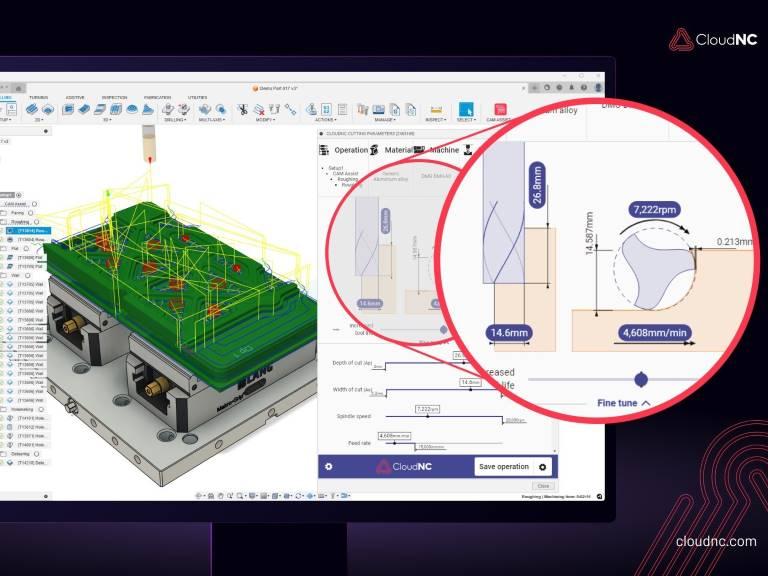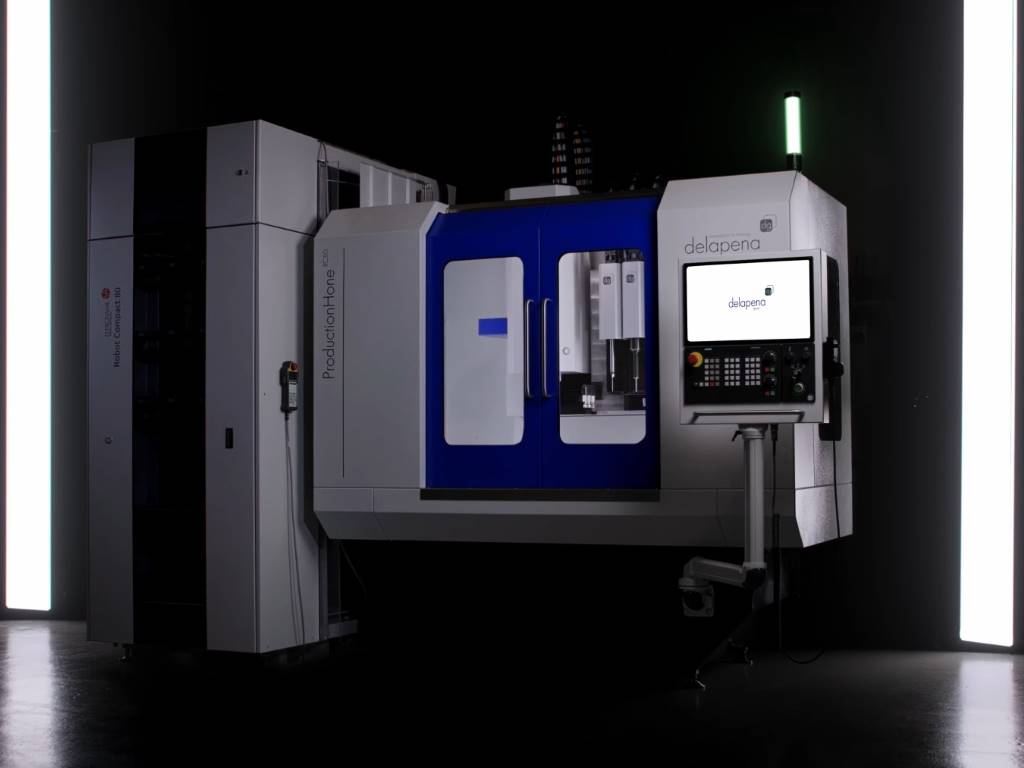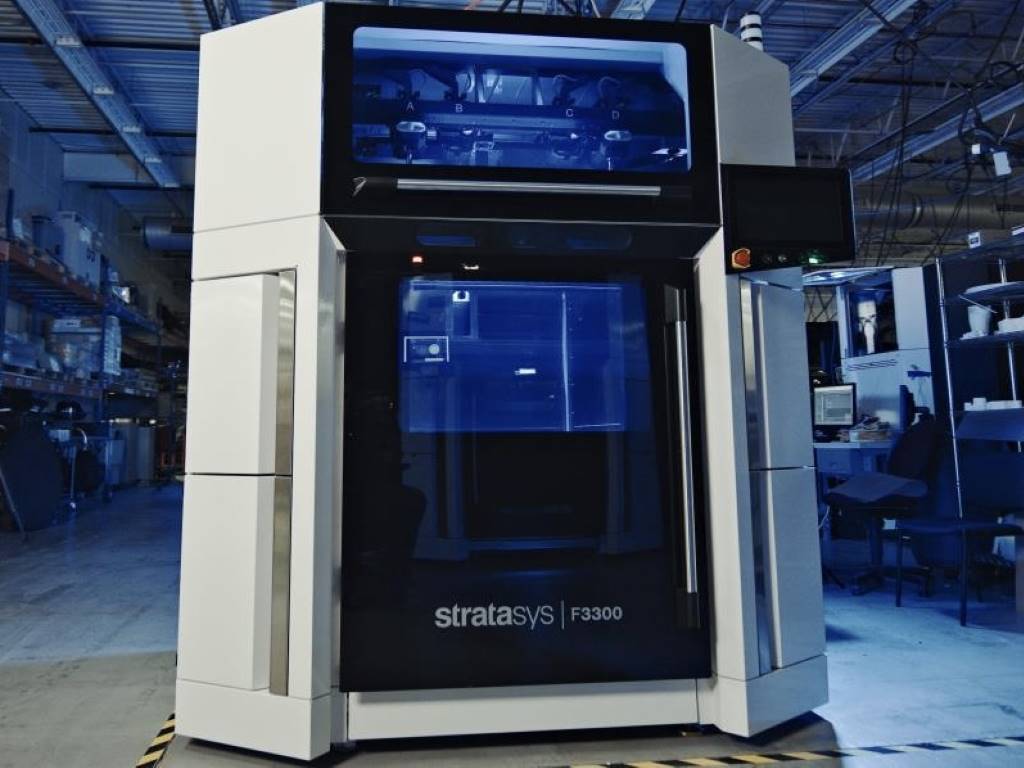Machining economics

The use of a Scharmann Ecospeed horizontal machining centre has enabled specialist aerospace supplier Magellan Aerospace to slash machining times of Airbus A350 aluminium wing ribs.
The use of a Scharmann Ecospeed horizontal machining centre has enabled specialist aerospace supplier Magellan Aerospace (UK) to slash machining times of Airbus A350 aluminium wing ribs and fulfil the commitment it made to its customer – achieving a greater than 75% saving in cycle time on one part. Solutions reports.
Magellan's operations manager, Adrian Young, explains that the company's Llay (near Wrexham) site first investigated the potential of the Ecospeed when Magellan began comparing the economics and effectiveness of machined aluminium wing ribs against composite ribs.
“Our ‘new' design of machined wing rib incorporates lots of pockets and we needed a machine that would be able to produce these most effectively,” he says. “We knew about the Ecospeed's ability to remove aluminium at 8,000cm³/minute, so made contact with Starrag UK. We wanted to compare the Ecospeed with other potential solutions for machining these high value components that often start life as four tonne billets but weigh just 140kg when finished machined.”
He continues: “It was clear that the high-speed (feed rate up to 50,000mm/minute) Ecospeed and its sophisticated CNC system functionality, as well as the innovative Sprint Z3 machining head, was the machine for the job. When machining, the speed of change of direction and ramp up seemed to be the Achilles heel on the other machines we looked at, whilst the superior jerk functionality available via the Ecospeed's Siemens 840D CNC meant there was no significant loss of speed and accuracy when pocketing.”
Heads up
With a fixed column, the Scharmann Ecospeed F2060 has a host of characteristics – not least the Sprint Z3 machining head – that also made it the best solution for Magellan's throughput of workpieces.
The Sprint Z3 machining head uses three parallel linear axes drives mounted radially equi-spaced in the headstock. The spindle platform is connected to each drive via rigid levers with pivots at each end and a ball joint at the other.
Synchronised motion of the three Z-axes allows the spindle to follow any path within a spherical cone of ±40° at a maximum of 80°/second. Equal and simultaneous motion of all three axes results in a straight line movement of the spindle in Z; if the three axes move differentially, the spindle platform will be tilted in the A/B planes.
In addition, the Ecospeed features a 120kW, 30,000rpm spindle, has X-, Y- and Z-axis travels of 6,300mm x 2,500mm x 670mm respectively, plus ±40° in A and B (1 second/80°). It features a twin pallet automatic changer (change time of 210 seconds) for pallets of 2,000mm by 6,000mm and able to accommodate payloads (component and workholding) of 5,000kg and measuring up to 2,000mm x 6,000mm x 370mm. A rack type automatic toolchanger/magazine houses up to 129 tools and chip to chip time is 9 seconds. The machine also features process cooling by means of MQL and mist extraction, in-process component probing, tool breakage control and a vacuum supply for component clamping (usual for wing rib work).
Balancing act
When Magellan tendered in 2008/9 for the A350 wing rib package, for ribs up to 6m long, the Ecospeed was at the forefront of Mr Young's mind. “Part cost is at the heart of every contract we tender for,” he reveals. “The contracts are usually based on fixed prices over a number of years (except for material costs) so it is essential we calculate the cost of each capital investment against realistic cycle times based on often very lengthy forward order forecasts. It's a complex balancing act and, of course, it's one we have to get right every time if we're to stay in business.”
The investment with Starrag UK in the large capacity machine was in many ways a leap of faith for Magellan but the decision was cushioned by some very good testimonials from existing users of the Ecospeed. Magellan initially harboured doubts about the machine's acceleration/deceleration capabilities over such extensive axis travels, however any trepidation was soon dispelled by the machine's performance in this respect: 7.30m/s² in X, 9.81m/s² in Y and Z, and 685°/s² in A and B.
“The machine has been working flat out for the past 12 months,” says Mr Young. “Indeed, it has also attracted new work, including wing ribs for A380 and A320, as well as other Airbus parts, and it has been so successful that we have recently placed an order for a second, similarly equipped Ecospeed F 2060 to meet this demand as well as to satisfy the plotted increase in A350 orders. Importantly too, the second machine will also enable us to bring back in-house certain work that is currently outsourced.
“Magellan's ongoing manufacturing success is based on a policy of continual improvement in every aspect of every operation,” Mr Young points out. “This is why we're continually working with our machine suppliers like Starrag UK, with our aerospace clients' designers and with our tooling suppliers.
“For example, on the A350 wing ribs, we're currently investigating new tooling that takes deeper, closer to the wall cuts, to leave just a single-pass finishing routine to reduce cycle times further without jeopardising product quality.
“This follows the successful application of, for example, SumiDrill WDX drills from Sumitomo Electric Hardmetal, which have transformed drilling tasks on a range of spars. These drills are being run 60% faster than the previous tooling and in one instance have produced 200 holes compared to just 10 when the previous drill suffered insert change/tool failure.”
Looking forward Clever programming also plays a key role in fully utilising the Ecospeed's capabilities in terms of wing rib machining and while Mr Young is clearly a fan of the machine's control system jerk functionality, he is also adamant that Magellan leaves no stone unturned in utilising the best programming skills available to improve machining routines and cycle times – courtesy of his in-house programmers, via Starrag UK's technical team or through the use of expert freelancers.
“Whilst we have been growing successfully for a number of years in a very competitive market, we face a global competitor base and, of course, we have to remain profitable,” he says. “These are perennial drivers for improvement and they keep me focused on achieving a forward, progressive strategy.”
The company also has sites in Blackpool (for hard metal component work up to 1m³), Bournemouth (aluminium parts up to 2,000mm³), Chalfont, Bucks (aluminium components up to 500m³) and at Greyabbey in Northern Ireland (wing ribs up to 4m). In addition to the Scharmann Ecospeed, Magellan Aerospace utilises a range of Starrag Group brand machines on various sites – Starrag, Heckert and Droop + Rein.
Magellan Aerospace (UK) is owned by Magellan Corporation, a global aerospace company with operations throughout North America, Europe and India.
Starrag UK
www.starrag.com












